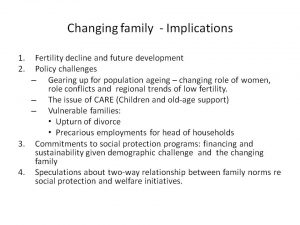 On 26 August 2016 Riatu Qibthiyyah (LPEM-UI) and Ariane Utomo (ANU and ARI-NUS) presented The Survey of Recent Developments which was published in the August 2016 edition of the Bulletin of Indonesian Economic Studies (BIES). In addition to looking back at the state of the economy in Indonesia, the Survey also focused on demographic change and its implications on social spending.
On 26 August 2016 Riatu Qibthiyyah (LPEM-UI) and Ariane Utomo (ANU and ARI-NUS) presented The Survey of Recent Developments which was published in the August 2016 edition of the Bulletin of Indonesian Economic Studies (BIES). In addition to looking back at the state of the economy in Indonesia, the Survey also focused on demographic change and its implications on social spending.
The Survey focuses initially on Jokowi’s continued efforts towards a range of targeted family-based social protection programs and universal health insurance. Previously, family and extended kinship networks have been the primary source of these forms of social protections for most Indonesians. Changing patterns in family structures and functioning might present challenges for further initiatives to expand social programs.
The Survey drew several findings regarding the changing structure of families in Indonesia. First, data has shown a period of declining household size since 1971 until 2015. Several factors may contribute to this finding, two of which are declining fertility levels and the rise of lone-person households. Second, there is leveling off of total fertility rate. There has been a sharp decline in fertility rate between the late 1960s to the 2000s, yet Indonesia is experiencing a fertility rate above the replacement level (the number of children to replace the parents). Using multi-method estimates, total fertility rate (TFR) in Indonesia is estimated to be hovering at the 2.4 children per woman mark. This trend has invited several perceptions; those seeing this as a favorable condition and those seeing this decline in fertility rate as unfavorable, considering the possibility of accelerating Indonesia’s pattern towards population ageing.
The third indicator of family change is the shifting age at which Indonesians were first married. Women’s increasing access to education and to paid employment was expected to sustain a trend of delayed marriage, yet recent data have indicated otherwise. The mean age for marriage for women in the 1990s was around 22; it climbed to 23.2 in 2006, and fell to 22.4 in 2011-2013 (Hull, 2016). The fourth indicator is the shift in marriage pairing partners. In the past, women tended to marry someone who was older and has better educational qualifications and earning prospects (Utomo, 2012). However, recent SUSENAS data exhibits a decline in the spousal age gap from 6.4 years to 4.7 years between 1982 and 2010. The last indicator mentions the upturn of divorce over the past decade.
There are several implications entailed to the changing structure and functioning of families in Indonesia. There are concerns regarding fertility decline and future development, yet there are also concerns in terms of policy challenges including the importance of gearing up for population ageing, the issue of children and old-age support, and concerns regarding vulnerable families due to the upturn of divorce. Demographic challenges also exist in social protection sustainability and financing.